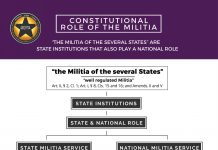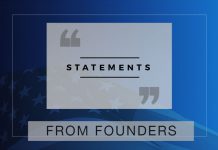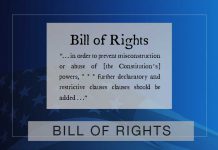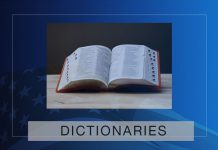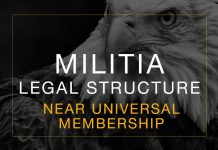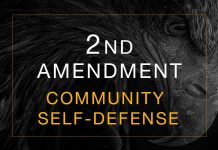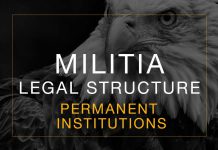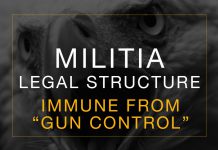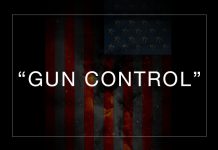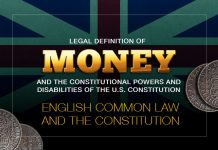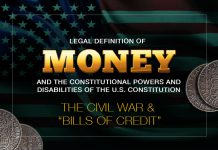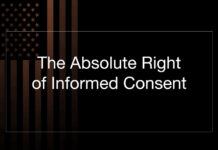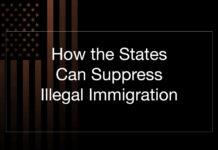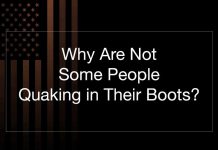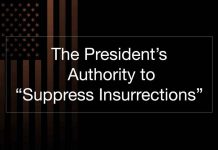Last Updated on August 20, 2022 by Constitutional Militia
“Federal Government”
As the Constitution makes pellucid, “the Federal Government” actually consists of five parts:
1.) Congress—Under Article I, § 1 (“[a]ll legislative Powers herein granted shall be vested in a Congress of the United States”);
2.) the President—under Article II, § 1 (“[t]he executive Power of the United States, shall be vested in a President of the United States of America”);
3.) the Judiciary—under Article III, § 1 (“t]he judicial Power of the United States, shall be vested in one supreme Court, and in such inferior Courts as the Congress shall from time to time ordain and establish”);
4.) the States—under the Tenth Amendment (“[t]he powers not delegated to the United States by the Constitution, nor prohibited by it to the States, are reserved to the States respectively, or to the people”); and
5.) WE THE PEOPLE under the Preamble, the Tenth Amendment, and the Ninth Amendment (“[t]he enumeration in the Constitution of certain rights, shall not be construed to deny or disparage others retained by the people”).
Constitution: By definition a charter of defined and therefore limited government.
The Constitution’s purposes are set out in the Preamble. The Constitution’s structure is designed to ensure that public officials employ their powers for those purposes alone. America’s Founders knew that “great difficulty” in politics is that “you must first enable the government to control the governed; and in the next place oblige it to control itself”.[1] to “oblige [the government, at every level,] to control itself”, they constructed the Constitution around a latticework of “checks and balances”. Two of these standout: namely, separation of powers within the General Government (as well as within the governments of the several States); and the federal system among the General Government, the States, and WE THE PEOPLE.
The Founders knew that “[n]o political truth * * * is stamped with the authority of enlightened patrons of liberty then that * * * [t]he accumulation of all powers, legislative, executive, and judiciary, in the same hands, whether of one, a few, many, and whether hereditary, self appointed, or elective, may justly be pronounced the very definition of tyranny“.[2] at the level of the General Government (and within the several states as well), a separation of powers is the specific “check and balance” that prevents “[t]he accumulation of all powers, legislative, executive, and judiciary, in the same hands” within the governmental apparatus.
The federal system is a system of separation of powers, which in its case establishes “checks and balances” that distribute and control the exercise of all political authority and responsibility among America’s three great governmental institutions: namely, the General Government, the several States, and the ultimate sovereigns, WE THE PEOPLE.[3] The federal system consists of:
(i) the General Government—usually differentiated into three components: Congress, the President, and the Judiciary;
(ii) the several States—usually treated as unitary entities, although their governments as well are composed of separate legislative, executive, and judicial branches; and
(iii) WE THE PEOPLE—in their capacities as the ultimate sovereigns who “ordain[ed] and establish[ed] th[e] Constitution”,[4] as the defenders and executors of their sovereignty through “the Militia of the several States”,[5] and as the electors implement that sovereignty through the regular selection of various “representatives”.[6]
The “rights” of individuals are no more than specific limitations upon the “powers” of public officials. A public official labors under a “duty” not to infringe upon an individual’s “right”. This duty entails a disability not to take official action—such as enacting or enforcing a statute—for the purpose or with the effect of such an infringement. A “disability” is the opposite of a “power”. Thus, a “right” establishes, in negative terms, a constitutional definition and therefore limitation on any “power” which public officials might attempt to assert against that individual in that respect.[7]
Every violation of a governmental power entails the violation of an individual right—because every individual is entitled to complain if public officials misuse or abuse any of their powers.[8] Simply by being enumerated (as they must be, in a written constitution), powers are defined; and precisely because and insofar as they are defined, they are limited. Logically, linguistically, and legally, the words that define a power also circumscribe it. Every power implicitly contains a corresponding disability. Because “affirmative words in the Constitution * * * must be construed negatively as to all other cases”,[9] a disability arises out of whatever the definition of a power excludes. The definition of a power is simultaneously the definition of a disability.[10]
Americans must recognize that not a single one of their rights has any practical value without a timely and effective remedy for its violation. Because “[a] right without a remedy is as if it were not. For every beneficial purpose it may be said not to exist.”[11] The Militia is that remedy.




